#white onion medicinal properties
Text
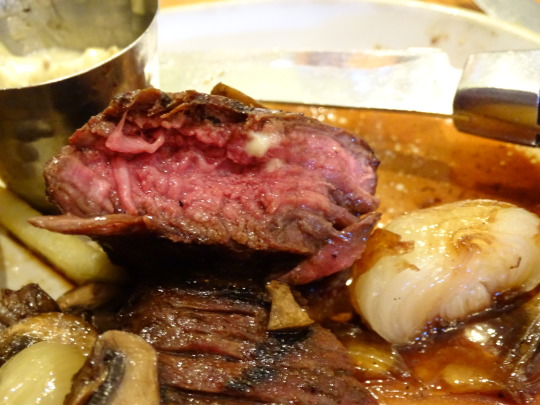










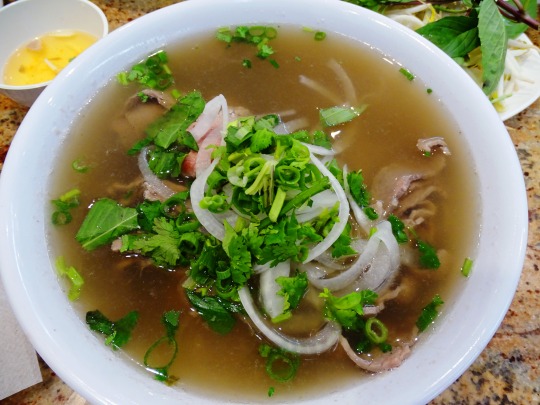





National Onion Day
Today, farmers in the United States are collecting millions of onions. They will be heading for store shelves to provide families with the fresh, nutritional, tasty power to improve meals and boost the body’s immunity. Onions have numerous advantages, such as enhancing meals with a variety of flavors. According to recent research, consuming onions also helps the body fight colorectal cancer and breast cancer, as well as heart disease and diabetes.
National Onion Day commemorates the incorporation of the National Onion Association in 1913. The organization was created to protect the interests of America’s onion growers, and onions remain their business to this day. Today, the group represents over 500 onion producers, shippers, packers, and suppliers across the country.
History of National Onion Day
In June 2022, the National Onion Association established National Onion Day to commemorate the organization’s 53rd anniversary. They officially incorporated on June 27, 1913, in Ohio, and represent almost 500 onion farmers, shippers, packers, and allied members across the U.S.
Onions are one of the world’s oldest cultivated vegetables, having originated in Central Asia and spread around the world. Some researchers believe the onion has been cultivated for at least 5,000 years. Onions were possibly eaten for thousands of years and cultivated all over the world at the same time, since they grew wild in different locations.
We rely on the onion to improve the flavor of our savory meals, whether we use a sweet, white, red, or ever-popular yellow onion. They complement meats and salads, making the versatile onion a culinary powerhouse. It’s the needed seasoning alongside our salt and pepper, whether added to eggs or pickled. While the onion is low in calories, it is also high in vitamin C and antioxidants, and can increase your dietary fiber and vitamin B6 intake. Unlike many other low-calorie ingredients, onions provide a high nutritional content without compromising flavor. And it makes no difference what you do to it; pickled or raw, caramelized, sauteed, or pureed — the onion adds a lot of flavor to a dish. With so many types to choose from, onions present numerous opportunities to reap the benefits.
National Onion Day timeline
3500 B.C. The Onion is First Traced in Egypt
The history of the onion can be traced back to this period, with a Sumerian document describing someone being in awe of the city governor’s onion garden.
1500 B.C. Ancient Egypt Worships Onions
To those who bury onions alongside their pharaohs, onions are a sign of eternity.
1913 National Onion Association Is Founded
On June 2, the National Onion Association is formally incorporated in Ohio.
2019 National Onion Day is First Celebrated
The National Onion Association establishes National Onion Day on June 27, to honor onion producers.
National Onion Day FAQs
Is an onion a vegetable or a fruit?
The vegetables are classified based on the edible part of the plant: leaves (like lettuce), roots (like carrot), bulbs (such as onions), and many others. Alternatively, fruits such as tomatoes and seeds such as peas are commonly referred to as vegetables.
Which country is the largest onion exporter?
According to FY18 data, China appears to be the top onion producer, but the Netherlands is the largest onion exporter.
Do onions aid in the treatment of infections?
Onions were worshiped for their medicinal powers by various civilizations. They have anti-inflammatory properties, relieve joint pain, treat ear infections, work as an antibiotic, and are an excellent expectorant for loosening up thick phlegm.
National Onion Day Activities
Add fresh onion to your favorite recipe
Learn how to grow onions in your backyard
Share the celebration on social media
For a flavor boost, be sure to add some onion in there. No matter how you slice it, onion pulls together some of the greatest flavors! Tell us how you like to cook your onions!
Gardening is fun! Furthermore, if you can cultivate some veggies like onions in your backyard, you can reduce the cost of your monthly groceries by harvesting them yourself.
Be sure to spread the word about National Onion Day by using the hashtag #NationalOnionDay on social media. Also, don’t forget to brag about your onion recipe or how you harvested your own onions.
5 Interesting Facts About Onion
They’ve been around for thousands of years
Sulfuric acid
Onions were worshiped by Ancient Egyptians
The biggest onion ever
The Big Onion
Onions have been present for thousands of years and, around 3,500 B.C, onions were harvested for the first time.
The reason you become teary-eyed when cutting onions is because of the sulfuric acid they contain.
They claimed that the spherical shape and concentric circles represented eternity — onions were used to cover the tombs of their monarchs and were important in ritual burials.
According to ‘The Guinness Book of World Records’, the biggest onion ever was cultivated by Peter Glazebrook, a British farmer, who grew a massive onion in 2011 that weighed just under 18 pounds.
Before it was known as the Big Apple, New York was known as the Big Onion, because it was a place where you could peel layer after layer without touching the center, kind of like an onion.
Why We Love National Onion Day
It encourages cultivation
It promotes culinary creativity
It boosts the immune system
Onions are an important, and healthy part of our diet. Why not grow and cultivate your own in your backyard?
Who would have thought onions, known for making us cry, could be so sweet and delectable with some creativity? These days, almost all culinary innovations use onion for a unique flavor.
Onions are rich in prebiotics. This helps to increase friendly bacteria in your guy, which helps to build immunity against viruses.
Source
#vacation#Jaime-Style with cheese & sauce Burrito#USA#food#Chow Line#Cowboy Burger#Chili Burger#Texas Roadhouse Chili#steak with mushrooms#Onion Rings#Pho Tai#Beef Black Pepper#Crispy Rice Noodle Tower#Pavla Plate#Green Chile Burger#National Onion Day#27 food#travel#original photography#restaurant#Canada#Fire Jumper Burger#Roast beef with remoulade & fried onions Smörrebröd#Greek Pizza
12 notes
·
View notes
Text
What Is Inflammation?
Inflammation, commonly referred to as "swelling," is the body's defensive response to stimuli, typically characterized by redness, swelling, heat, pain, and functional impairment. Inflammation can be acute or chronic. Acute inflammation is usually beneficial. When you sprain your ankle or catch a cold, the body sends out a large number of white blood cells to help heal the injury or capture harmful bacteria. During this process, you might experience redness, warmth, tenderness, or swelling.
Chronic inflammation, on the other hand, occurs when the body continues to send out signals and produce white blood cells to fight off infection or injury even when no danger is present. These cells may start attacking healthy cells and tissues, leading to chronic inflammation. Chronic inflammation increases the risk of conditions like cancer, heart disease, rheumatoid arthritis, type 2 diabetes, and degenerative brain diseases such as Alzheimer's disease.
Causes of Inflammation:
Environmental Factors:
Air pollution
Industrial hazardous waste
Chemicals
Lifestyle Factors:
Lack of sleep
Irregular routines
Lack of exercise
Psychological stress
Dietary Factors:
Processed sugars
Refined carbohydrates
Trans fatty acids
Gluten
Food additives and preservatives
The occurrence and progression of inflammation are closely related to free radicals. Consuming foods high in free radicals, exposure to polluted air, excessive sugar intake, and lack of exercise can lead to an increase in free radicals in the body, thereby exacerbating inflammation. Conversely, inflammation can also stimulate the production of free radicals, creating a vicious cycle, which is how chronic inflammation develops.
Anti-Inflammatory Agents:
Omega-3 Fatty Acids:Omega-3 fatty acids are polyunsaturated fats. DHA and EPA, two of the three main omega-3s, are primarily found in seafood like sardines, fresh fish, tuna, and krill, as well as in algae. The best source of the third major omega-3, ALA, includes certain nuts, seeds, and plant oils like flaxseed oil, soybean oil, and canola oil.
Turmeric/Curcumin:Curcumin is a natural anti-inflammatory agent with strong antioxidant properties. Research shows that it offers various health benefits and may help manage a range of oxidative and inflammatory conditions, including metabolic syndrome and osteoarthritis.
Ginger:Ginger naturally contains antioxidants and may have antibacterial and anti-inflammatory properties that support the immune system. Studies suggest that the bioactive compounds in ginger may help alleviate issues caused by inflammation, such as the severity of ulcerative colitis, Crohn's disease, rheumatoid arthritis, and chronic pain.
Piperine:Piperine, a component found in black pepper, may help enhance the absorption of other important nutrients. From iron to beta-carotene to curcumin, in Ayurvedic medicine, the combination of long pepper, black pepper, and ginger, known as Trikatu, is believed to work synergistically to reduce inflammation.
Vitamin D:Vitamin D is well-known for its role in strengthening bones, but a study published in the International Journal of Epidemiology found a direct link between low levels of vitamin D and high levels of inflammation. When researchers examined the health data of nearly 300,000 people, they found that low levels of vitamin D may help identify individuals at higher risk of chronic diseases with an inflammatory component. The findings also suggest that increasing vitamin D intake in those who are deficient may help reduce chronic inflammation.
Quercetin:This plant pigment, found in onions, is a flavonoid compound that acts as an antioxidant, helping to protect cells from damage. In addition to its antioxidant potential, some research suggests that quercetin may also act as a cellular brake, preventing the proliferation of inflammatory cells and enzymes.
Synbiotics:The presence of certain bacteria in the gut may lead to several inflammation-related diseases, including type 2 diabetes, inflammatory bowel disease (IBD), and rheumatoid arthritis. Synbiotics are foods or dietary supplements that combine probiotics (promoting healthy bacteria) with prebiotic fibers that help these bacteria thrive.
Apigenin:Apigenin is a type of flavonoid, a class of plant chemicals found in plant tissues that help plants during pathogen attacks and sunlight exposure while attracting pollinators and regulating plant metabolism. It is present in a variety of fruits, vegetables, and herbs. When taken as a supplement, it exhibits anti-inflammatory effects and antioxidant properties.
0 notes
Text
Which Bitter Gourd Is Less Bitter?
Introduction
Bitter gourd is a famous vegetable known for its distinct, bitter flavour. While it is packed with nutrients and offers numerous health benefits, the bitterness can be a challenge for many. In 2024, you may be wondering, which bitter gourd is less bitter In this blog, we’ll explore different types of bitter gourd, why they are bitter, and how you can reduce the bitterness to enjoy this healthy vegetable more easily.

Key Takeaway
Bitter gourd varieties differ in bitterness, with some being less bitter than others.
Smaller, darker green varieties tend to be more bitter.
There are ways to reduce the bitterness of bitter gourd before cooking.
Why Is Bitter Gourd Bitter in Taste?
The Science Behind the Bitterness
The bitterness of bitter gourd is primarily due to compounds called momordicin and charantin. These naturally occurring substances are responsible for the intense, sharp Unique taste that many people find challenging. The bitterness is actually a sign of the gourd’s high medicinal value, as these compounds are linked to various health benefits, including blood sugar regulation and antioxidant properties.
Why Is Bitter Gourd So Bitter?

Which Bitter Gourd Is Less Bitter
The Role of Variety and Size
Not all bitter gourds are created equal. In fact, the variety and size of the bitter gourd play a significant role in its bitterness level. What is the Uses?
Indian Bitter Gourd:
The most common type, it is usually dark green and has a rough, spiky surface. This variety is known to be very bitter due to its high content of momordicin.
Chinese Bitter Gourd:
This type is lighter in colour and has a smoother, less spiky surface. Chinese bitter gourd is generally less bitter than its Indian counterpart.
Baby Bitter Gourd:
Smaller and often darker in colour, baby bitter gourd is usually more bitter. The smaller the gourd, the more concentrated the bitter compounds are.
Which Bitter Gourd Is Less Bitter?
When asking which bitter gourd is less bitter, the answer lies in understanding the differences between the varieties:
Chinese Bitter Gourd: Generally less bitter, with a milder flavour.
Indian Bitter Gourd: More bitter, with a stronger taste.
White Bitter Gourd: A rarer variety that is often less bitter than both the Indian and Chinese types. White bitter gourd
Tips for Reduce Bitterness of the Bitter Gourd
Even the most bitter varieties of bitter gourd can be made palatable with a few kitchen tricks. Here are some effective methods:
Cut the bitter gourd into slices and sprinkle with salt. Give them a half hour to settle before washing. The bitter juices are drawn out by the salt.
Soaking sliced bitter gourd in salt water for 15–20 minutes can also help reduce bitterness.
Blanching the bitter gourd in boiling water for 2–3 minutes before cooking can help reduce the bitter taste.
Cooking bitter gourd with sweet ingredients like onions, jaggery, or honey can balance out the bitterness.
Read more...
White Bitter Info Health
0 notes
Text
5 Delectable Recipes Featuring Whole Green Cardamom
In the realm of culinary delights, few ingredients hold as much allure as Green Cardamom. Known for its intense aroma and complex flavor profile, this spice adds a touch of sophistication to any dish. Today, we embark on a flavorful journey exploring five enticing recipes that showcase the versatility of Whole Green Cardamom. From savory to sweet, these dishes promise to tantalize your taste buds and awaken your senses.

Understanding Whole Green Cardamom: Before we delve into the recipes, let's take a moment to appreciate the essence of Whole Green Cardamom. Unlike its ground counterpart, Whole Green Cardamom retains its full flavor and aroma, making it a prized ingredient in culinary traditions around the world. Whether used in savory curries or decadent desserts, its distinct taste elevates every dish it graces.
Health Benefits of Cardamom: Beyond its culinary appeal, Cardamom boasts an array of health benefits. Studies suggest that it aids digestion, freshens breath, and possesses antioxidant properties. In traditional medicine, Cardamom is revered for its ability to promote overall well-being, making it a valuable addition to any kitchen.
Recipe 1: Fragrant Cardamom Rice Pilaf Ingredients:
Basmati rice
Whole Green Cardamom pods
Cinnamon sticks
Cloves
Sliced almonds
Raisins
Ghee
Salt
Instructions:
Rinse the basmati rice and soak it in water for 30 minutes.
In a pan, heat ghee and add Whole Green Cardamom pods, cinnamon sticks, and cloves.
Add the soaked rice and sauté until lightly toasted.
Add water, salt, sliced almonds, and raisins. Cover and cook until the rice is tender.
Fluff the rice with a fork and serve hot.
Recipe 2: Spiced Cardamom Chicken Curry Ingredients:
Chicken pieces
Onions
Tomatoes
Ginger-garlic paste
Turmeric powder
Red chili powder
Coriander powder
Garam masala
Fresh cilantro
Oil
Whole Green Cardamom pods
Instructions:
Heat oil in a pan and add chopped onions. Sauté until golden brown.
Add ginger-garlic paste and Whole Green Cardamom pods. Cook until fragrant.
Add diced tomatoes and cook until softened.
Add turmeric powder, red chili powder, coriander powder, and garam masala. Cook until the oil separates.
Add chicken pieces and cook until tender. Garnish with fresh cilantro and serve hot.
Recipe 3: Decadent Cardamom Infused Chocolate Truffles Ingredients:
Dark chocolate
Heavy cream
Whole Green Cardamom pods
Cocoa powder
Chopped pistachios (optional)
Instructions:
Heat heavy cream in a saucepan and add Whole Green Cardamom pods. Simmer for 5 minutes.
Strain the cream and pour it over chopped dark chocolate. Let it sit for a few minutes.
Stir until smooth and creamy. Refrigerate until firm.
Roll the mixture into small balls and coat them in cocoa powder or chopped pistachios.
Serve chilled and indulge in the rich flavors of Whole Green Cardamom.
Recipe 4: Refreshing Hari Elaichi Mint Mojito Ingredients:
Fresh mint leaves
Lime wedges
Sugar
Club soda
White rum (optional)
Ice cubes
Whole Green Cardamom pods
Instructions:
Muddle fresh mint leaves, lime wedges, sugar, and Whole Green Cardamom pods in a glass.
Add ice cubes and a splash of white rum (if using).
Top with club soda and stir gently.
Garnish with mint leaves and enjoy the vibrant flavors of Hari Elaichi in every sip.
Recipe 5: Aromatic Elaichi Saffron Rice Pudding Ingredients:
Milk
Basmati rice
Sugar
Saffron strands
Slivered almonds
Raisins
Whole Green Cardamom pods
Instructions:
Cook basmati rice in milk until soft and creamy.
Add sugar, saffron strands, slivered almonds, raisins, and Whole Green Cardamom pods.
Simmer until the pudding thickens and the flavors meld together.
Serve warm or chilled, garnished with additional almonds and saffron strands.
Conclusion: As we conclude our culinary odyssey, it's evident that Whole Green Cardamom holds the key to a world of gastronomic delights. Whether infused in savory dishes or nestled within sweet indulgences, its enchanting aroma and bold flavor never fail to captivate. So, gather your ingredients and embark on your own culinary adventure with these five delectable recipes featuring the timeless allure of Green Cardamom.
0 notes
Text
“Garlic: Nature's Strong Treatment"
Garlic is a humble bulb that's ubiquitous in kitchens around the world, but it's more than just a culinary delight. It is a powerhouse of health benefits. In addition to its unique taste and aroma, garlic has a history of medicinal use dating back thousands of years. Farzana Vegetables Wholesale in the UAE will discuss the numerous benefits and health benefits that make garlic a true superfood.
Nutritional profile:
Garlic (Allium sativum) belongs to the onion family and is known for its excellent nutritional value. Rich in vitamins and minerals such as vitamin C, vitamin B6, manganese, and selenium, garlic is a low-calorie and highly nutritious supplement. Immune system booster:
One of the most well-known benefits of garlic is its immune-boosting properties. Allicin, a sulfur compound found in garlic, is thought to enhance the disease-fighting response of some types of white blood cells. Regular consumption of garlic has been shown to reduce the risk of common illnesses such as the common cold.
Heart Health Guard:
Garlic has been linked to promoting heart health by lowering cholesterol and blood pressure. Allicin has been shown to positively impact lipid profiles and contribute to cardiovascular health. Anti-inflammatory:
Chronic inflammation is a common feature of many chronic diseases. Garlic contains bioactive compounds with anti-inflammatory properties that reduce inflammation and reduce the risk of inflammatory diseases.
Antioxidant arsenal:
Garlic is rich in antioxidants that help fight oxidative stress in the body. These antioxidants play an important role in neutralizing free radicals, reducing the risk of chronic disease and slowing the aging process.
Cancer prevention:
Some studies suggest that garlic may have anti-cancer properties. Its organic sulfur compounds have been shown to inhibit the growth of cancer cells and reduce the risk of certain cancers, such as stomach and colon cancer.
Antibacterial and antiviral properties:
Garlic has traditionally been used for its antibacterial and antiviral properties. Allicin, the main component of garlic, has antibacterial properties and is effective against various bacteria and viruses.
Detoxification aid:
Garlic supports the body's detoxification process by promoting the production of detoxifying enzymes. These enzymes help remove harmful substances from the body and contribute to overall health. Improved athletic performance:
In ancient times, garlic was administered to Olympic athletes to improve their performance. While it may not be a magic elixir, some studies suggest that garlic may improve athletic performance by reducing fatigue and increasing endurance.
From its use in cooking to its amazing health benefits, garlic stands out as a versatile and effective natural remedy. Whether incorporated into your favorite recipes or taken as a dietary supplement, garlic's benefits make it worth adding to your daily routine. Harness the power of garlic to benefit your overall health.
#Foodstuff Trading Company Dubai#HoReCa supplier in UAE#Fruits & vegetable food service supplier#Fruits wholesaler in the UAE#Vegetables Wholesale in the UAE#re-export fruits & vegetables from uae
0 notes
Text
Allium Flower Meaning, Symbolism & Spiritual Significance

The genus Allium encompasses a variety of flowering plants famously recognized as onions, garlics, leeks, and chives. These adaptable plants have held significance for centuries and continue to be fundamental in diverse cuisines globally. In addition to their culinary uses, Allium flower also symbolize various meaning.
Unity
One of the most remarkable characteristics of allium is its ability to bring people together. In many cultures, sharing a meal with friends and family is a significant way of fostering unity and togetherness. Allium is often used as a key ingredient in many traditional dishes where it adds flavour, aroma, and nutrition to the cuisine.
Good Fortune

Allium has also been associated with good fortune. In some cultures, it is believed that consuming allium can bring good luck and prosperity. The Chinese, for example, believe that eating green onions during the Lunar New Year can ward off evil spirits and bring good fortune to their homes.
Prosperity
Moreover, allium is also believed to be a symbol of prosperity. The ancient Egyptians, Greeks, and Romans all appreciated the culinary and medicinal properties of allium and used it in various rituals and ceremonies as a symbol of wealth and abundance.
Humility
Despite its revered status in many cultures, allium remains a humble vegetable. Its ability to grow in almost any climate or soil type, coupled with its uncomplicated allium care requirements, make it easy to cultivate. This simplicity is one of the reasons why allium has become such a popular ingredient in home gardens and small-scale farming.
Patience
Finally, allium teaches us patience. Growing allium requires a bit of time and effort, but the wait is worth it. From planting to harvest, the process takes several months, but when the time comes, the reward is a bountiful harvest of delicious, nutritious vegetables.
In conclusion, allium is more than just a vegetable; it's a symbol of unity, good fortune, prosperity, humility, and patience. Incorporating this amazing plant into your diet can not only provide you with essential nutrients but also bring a sense of tradition and culture to your table. So, whether you are a seasoned cook or a beginner gardener, allium is an excellent addition to any kitchen or garden.
Allium Flower Color Meanings

Allium is a genus of flowering plants that are known for their vibrant and attractive blooms. These flowers come in a variety of colors, each with its own unique meaning and symbolism.
Purple Allium Flower Meaning
One of the most common colors of allium flowers is purple. This vibrant color is associated with royalty, luxury, and ambition. Purple alliums can be used to symbolize power, creativity, and innovation. They are also often associated with spirituality and mystical experiences.
White Allium Flowers
White allium flowers are another popular choice, and they represent purity, innocence, and new beginnings. White alliums can be given as a gift to someone starting a new chapter in their life, such as a new job or a new relationship. They are also a popular choice for weddings and other ceremonies because of their symbolic meaning.
Pink Allium Flower Meaning

Pink allium flowers represent love, romance, and affection. They can be given as a gift to a romantic partner or used to express gratitude and appreciation to a friend or family member. Pink alliums can also be used as a way to express sympathy and condolences during times of loss and mourning.
Blue Allium Flowers
Blue allium flowers are a rare but beautiful sight. This color is associated with calmness, serenity, and tranquility. Blue alliums can be given as a gift to someone who is going through a stressful time or used to create a peaceful and relaxing atmosphere in the home or garden.
Yellow Allium Flowers
Finally, yellow allium flowers are associated with happiness, joy, and positivity. They can be given as a gift to someone who needs a pick-me-up or used to celebrate a special occasion such as a birthday or anniversary. Yellow alliums are also a popular choice for spring gardens because of their bright and cheerful color.
Allium Flower Gift Meaning: Symbolism of Strength, Elegance and Perfection
If you're looking for a unique way to show your appreciation to someone special, consider gifting them with allium flowers. These stunning blooms are not only visually captivating, but they also hold a deep symbolic meaning.
In this article, we'll explore the significance of allium flowers and how they represent strength, elegance, and perfection. By the end, you'll have a better understanding of why allium flowers make such a meaningful gift.
You Are Strong
The allium flower is often associated with strength and endurance. This is because the plant is incredibly hardy and can withstand harsh weather conditions. The tall stems and large, spherical blooms of the allium represent resilience and perseverance.
By giving someone allium flowers, you are telling them that they are strong and capable of overcoming any obstacle in their path. Whether your friend is going through a difficult time or has accomplished something impressive, allium flowers are a great way to show your admiration and support.
You Are Elegant
Allium flowers are also renowned for their elegant beauty. The long, slender stems and delicate petals create a graceful appearance that exudes sophistication. Alliums are also versatile, coming in a range of colors from soft pastels to vibrant purples.
Giving allium flowers as a gift tells your loved one that you see them as refined and stylish. Perhaps they have a keen eye for fashion and design or carry themselves with poise and grace. Whatever the reason, allium flowers are an excellent choice for those who appreciate the finer things in life.
You Are Perfect

Finally, allium flowers symbolize perfection and completeness. The spherical shape of the bloom represents unity and harmony, while the intricate details of each petal showcase the beauty of the natural world.
By giving someone allium flowers, you are expressing how much you admire and value them. Whether for a birthday, anniversary, or just because, alliums make an excellent choice for showcasing how much you appreciate your loved one's unique qualities.
Allium Spiritual Significance
Allium, commonly known as onion, garlic, leeks, and chives, have been used in various spiritual practices throughout history. Here are some examples of their spiritual significance:
Protection: In many cultures, alliums are believed to have protective properties. For instance, Ancient Greeks hung garlic bulbs around their homes to ward off evil spirits and protect against the "evil eye." Similarly, in India, it is believed that consuming garlic and onion can protect you from negative energy.
Purification: Alliums have also been used in spiritual cleansing rituals. In some Native American traditions, a person would rub themselves with a cut onion or garlic before entering a sacred space or performing a ceremony to cleanse themselves and rid themselves of any negative energy.
Symbolism: Alliums have been used as symbols of strength, power, and elegant. The bulb of an onion or garlic represents the seed of life and regeneration, while the strong odor of these plants is thought to symbolize inner strength and power.
Healing: Alliums have been used for their medicinal properties for centuries. Their healing powers were documented by ancient civilizations such as the Egyptians and Greeks. In Ayurveda, an ancient Indian system of medicine, garlic and onions are believed to have powerful healing properties and are used to treat a wide range of ailments.
Overall, alliums have played an important role in spiritual practices throughout history due to their protective, purifying, symbolic, and healing properties.
Etymological Meaning Of The Allium Flower
The word "Allium" is derived from the Latin word "allium," which means garlic. This is because many species of the Allium genus, such as onions, garlic, and chives, have a distinct garlic-like odor. The Allium flower itself has been used symbolically in different cultures throughout history. In ancient Egyptian culture, it was believed to represent unity, while in Victorian times, it was a symbol of prosperity and good fortune. Today, the Allium flower is often associated with elegance, grace, and a sense of refined beauty.
What do Allium Flowers Symbolize in Literature and Art?
Allium flowers have been used as symbols in literature and art for centuries. In literature, the Allium flower is often used to represent beauty, grace, and elegance. For example, in William Shakespeare's play "A Winter's Tale," Allium flowers are mentioned as a beautiful and delicate addition to a garden.
In art, the Allium flower has also been used as a symbol of beauty and grace. The artist Claude Monet was particularly fond of painting Alliums in his iconic garden at Giverny. His famous painting called "Irises and Alliums" showcases the tall, spiky blooms of the Allium in shades of purple, blue, and white.
In addition to their aesthetic qualities, Alliums have also been associated with deeper symbolic meanings. In some cultures, they are thought to represent unity and wholeness, while in others, they are seen as a symbol of good fortune and prosperity. Overall, the Allium flower remains an enduring symbol of beauty and grace that continues to inspire artists and writers alike.
What Do Allium Flowers Represent in a Dream?

Dreams about Allium flowers can have different meanings depending on the context of the dream and the cultural symbolism associated with the flower. In general, however, Allium flowers in a dream can represent beauty, elegance, and refinement.
If the dreamer sees Allium flowers growing in a garden, it may indicate a sense of personal growth or renewal, as well as a desire for beauty and harmony in their life. The dream may be encouraging the dreamer to focus on developing their inner self and nurturing their own personal growth.
If the dreamer is given an Allium flower as a gift, it may signify recognition or appreciation from someone else for their talents or skills. Alternatively, it may represent the dreamer's own desire for recognition or validation.
If the dreamer sees a wilted or dying Allium flower, it could suggest a sense of disappointment or loss related to beauty, creativity, or personal growth. This could be a warning to take care of oneself and to avoid neglecting one's own needs or creative expression.
Overall, dreams about Allium flowers can be interpreted as reminders to value and nurture beauty, grace, and personal growth in one's life.
Allium Flower FAQs
What does Allium mean in the language of flowers?
In the language of flowers, Alliums represent unity, humility and patience. They are also sometimes associated with good fortune and prosperity.
What do alliums symbolize?
Alliums symbolize several things, including unity, humility, patience, good fortune and prosperity. They are also sometimes associated with the ability to ward off evil and protect against harm. Alliums have been used in various cultures throughout history for their medicinal properties as well.
Read the full article
0 notes
Text
Diet and breast cancer

Breast cancer is the most common cancer in women. Breast cancer is diagnosed in 1 in 8 women and 1 in 5 women under the age of 50. If you're postmenopausal or overweight, you're at a higher risk of breast cancer, so you should be at a healthy weight. For that, you need to eat and exercise that is suitable for your condition. Breast cancer diet is suitable. Finally, we discuss the right or wrong of certain foods and their relationship to breast cancer.
The Importance of a Balanced Diet in Breast Cancer Patients
A healthy diet is important for everyone, but if you have breast cancer, you should be more careful about what you eat. Following a balanced diet during and after breast cancer treatment can greatly help improve patients' quality of life and better control the disease.
The foods we mention can form a balanced diet that prevents the development of breast cancer:
A wide variety of colored fruits and vegetables such as garlic, onions, ginger, soybeans, carrots, cabbage, parsley, capsicum, cabbage family and Moringa (especially the roots of this plant, which of course should be consumed under the supervision of a doctor)
Foods rich in fiber such as whole grains, legumes and beans
Consumption of low-fat milk and dairy products, preferably probiotics
Foods rich in vitamin D
Foods, especially spices with anti-inflammatory properties, such as turmeric, which prevent the growth of cancerous cells.
Green tea with many antioxidant properties instead of caffeinated drinks
Use of organic food and not supplements
A study of 91,000 women found that following a diet rich in vegetables (about two-thirds) could reduce the risk of developing breast cancer by 15%. Researchers recommend consuming about 8 to 10 servings of fruits and vegetables a day. Among other properties, fruits and vegetables are rich in carotenoids and flavonoids, which have countless medicinal properties. Proper nutrition to prevent breast cancer
Research shows that taking into account the diet you must follow with breast cancer and, of course, the aforementioned fruits and vegetables can prevent breast cancer from occurring.
dark leafy vegetables
paprika
tomato
eggplant
citrus
Carrot
broccoli
onion
apple
pear
peach
strawberry
Cabbage family
Moringa
fiber
Fiber's positive effects on the digestive system and support of the elimination process help the body rid itself of toxins and their harmful effects.Whole grains and legumes contain antioxidants that help prevent many diseases. It also contains substances. Nutritionists recommend consuming 30-45 grams of fiber daily.
obesity
Not all fats are bad, researchers say. Fats in processed foods, trans fats in fried foods, and trans fats in some crackers, candies, and donuts can be threatening. Reduce your consumption of saturated fats found in red meats, solid animal oils and hydrogenated oils and replace them with good fats (unsaturated fats) found in olive oil, avocados, nuts and seeds.
In addition, omega-3 fatty acids found in cold-water fish such as salmon and herring help prevent breast cancer.
foods harmful to breast cancer
alcohol
There is strong evidence that alcohol consumption may increase the risk of breast cancer. It's estimated that up to 22% of breast cancers can be prevented by stopping drinking.
Researchers have found a direct relationship between regular alcohol consumption and breast cancer. Studies show that alcohol can raise estrogen levels and damage cellular DNA. The researchers also said that women who drank alcohol three times a week had a 15% increased risk of developing breast cancer, and this increased risk increased by 10% for each additional day.
sugar
Studies in mice have shown that high sugar intake causes tumors in the mammary glands, and these tumors tend to metastasize and spread.
Other restricted foods:
White bread
red meat
caffeine
Estrogen and plant estrogen sources such as soy
Sesame
cumin
linseed
licorice
Breast Cancer Nutrition Facts and Myths
dairy products and breast cancer
In most Asian countries, the incidence of breast cancer is lower than in Western countries. One factor that has received a lot of attention is the consumption and type of dairy products. Some believe that the high consumption of milk and dairy products in Western countries contributes to the high incidence of breast cancer, and that the hormones in milk are to blame. However, the eating habits and lifestyles of Asian women are very different from those of the West.
But what does science say about this?
Scientific studies have yet to confirm strong evidence for an association between dairy products and breast cancer, and have not shown dairy products to be a possible factor in increasing breast cancer risk. Contrary to popular belief, cows in the EU are less likely to develop breast cancer because they are not injected with hormones to produce their milk and because their milk contains lower levels of natural hormones.
soybeans and breast cancer
As for soy, there are both claims that soy increases the risk of breast cancer and claims that it lowers the risk. But what does science say about this? Soybeans naturally contain plant compounds based on phytoestrogens, which are structurally similar to the female hormone estrogen. Estrogen can attach to cells of some types of breast cancer (ER-positive) and stimulate them to proliferate. High estrogen levels increase the risk of breast cancer. Therefore, it has been suggested that eating soy as part of the diet may increase estrogen levels in humans, but this is not the case. Interestingly, soy phytoestrogens can prevent estrogen from binding to some breast cancer cells, slowing their growth.The largest population survey in the region was conducted in China. A study conducted at the Shanghai Women's Health Research Center examined the health and dietary intake of soy among more than 70,000 Chinese women. Soybean consumption in China is significantly higher than in the United States. Many Chinese are lactose intolerant, so they are fed milk and soy during childhood. In addition, other types of soybeans such as tofu and edamame are part of the traditional Chinese diet.
superfoods and breast cancer
You may have seen or heard in the media that certain foods rich in the nutrients your body needs may help reduce cancer.
And as far as science goes:
The term superfood has no legal definition and cannot be used on food stamps.No single food can meet all of the body's needs. Just because a food can kill cancer cells grown in a bowl in a lab doesn't mean eating too much of that food will protect you from cancer. And even with that settling in, we're naturally depriving our bodies of various nutrients and plant compounds. Binge eaters suffer from diets high in calories, saturated fat, sugar, salt, and alcohol, as well as diets that are overweight and unhealthy. You can't fight a low activity diet.
Finally, we concluded that overweight, obesity, menopause, physical inactivity, and alcohol consumption are the main factors that increase the risk of breast cancer.
nutrition and genetics
Foods have been shown to be harmful or beneficial, depending on what mutations are involved in a person's cancer. For example, coffee may benefit people with BRCA1/2 mutations, depending on the genotype of other genes. Patients with BRCA-associated breast cancer respond well to a diet containing resveratrol I3C DIM and genistein. These substances are found in large amounts in superfoods and you can spot these things with the help of a genetic counselor who is also knowledgeable in the field of nutrition so you can determine what kind of mutation you have. And you can get the right diet according to your physical condition.
Read the full article
0 notes
Text
Gary Null’s Show Notes
03 15 23 P
If you listen to Gary’s show, you know that he begins with the latest findings in natural approaches to health and nutrition. Starting this week, we will make some of those findings available each weekday to subscribers to the Gary Null Newsletter.
Apples and pears can slash your stroke risk by half
Consuming turmeric for just 2 months can increase your good gut bacteria by 7%
Excess weight, obesity more deadly than previously believed
Apples and pears can slash your stroke risk by half
Wageningen University (Netherlands), February 19, 2023
Exciting research results out of Holland show that the simple act of adding more apples and pears to your diet can help to prevent incidents of stroke by up to 52 percent. The researchers believe that the high content of quercetin, a potent antioxidant in white-fleshed fruits is what gives these foods their healing power.
Of course, it should be noted that most fruits and vegetables that have white flesh tend to be loaded with quercetin – not just apples and pears.
For the study, 20,000 people kept detailed records about the foods they ate daily over a 10 year period. When the data was analyzed, it showed participants who ate high amounts of fruit with white flesh, in particular apples and pears, showed a 52 percent reduced risk of having a stroke.
For every additional 25 g of white fruits and vegetables a person consumed, their risk of stroke fell by 9 percent.
Quercetin, in apples and pears, is the key to reducing blood clots. The quercetin found in high amounts in white-fleshed fruits is known for its ability to support cellular health and functioning. It also inhibits inflammatory cytokines production – which is known to assist in blood clotting regulation.
In addition to apples and pears: bananas, grapefruit, onions and legumes contain quercetin. However, taking a quercetin supplement can also help to bring you anti-stroke benefits.
The recommended dose of quercetin is generally 250 mg per day, but you should check with your doctor to determine the ideal dose for you.
Consuming turmeric for just 2 months can increase your good gut bacteria by 7%
University of California San Diego, February 18, 2023
Gut health isn’t just important for digestive health, it also benefits other body systems, including the nervous and the immune system. This means that having a healthy gut is important in keeping both the mind and body in shape. The key to having great gut health is to keep a balanced and diverse array of bacteria living in the digestive system.
A recent study suggests that you can increase your good gut bacteria by 7 percent by taking turmeric for two months. Turmeric, of course, has curcumin, a compound which gives the spice its bright yellow color and its powerful antioxidant properties.
Published in the Journal of Evidence-Based Integrative Medicine, the study investigated how turmeric and curcumin influenced gut health. In the study, a team of U.S. researchers recruited 30 healthy participants and divided them into three groups: a placebo group, a turmeric group, and a curcumin group. The difference between the turmeric and curcumin group was that the latter received tablets that contain a standardized form of curcumin extracted from turmeric.
They gave the participants turmeric tablets with extract of piperine, curcumin with piperine tablets, or placebo tablets for two months. Piperine is the active ingredient in black pepper that gives the spice’s unique taste. Earlier animal studies have found that herbal ingredients like turmeric and black pepper may influence the diversity of bacteria in the gut.
The researchers assessed the changes in the gut microbiota through stool samples collected from the participants. The results showed that those who took turmeric and curcumin supplements had an almost seven percent increase in bacteria species in their guts. On the other hand, those who took the placebo experienced a decrease of 15 percent in gut bacterial diversity.
The researchers said that turmeric and curcumin exhibited a prebiotic-like effect, which came from indirect effects, such as a change in barrier function through selective survival of local bacteria or other microorganisms.
Excess weight, obesity more deadly than previously believed
University of Colorado at Boulder
Excess weight or obesity boosts risk of death by anywhere from 22% to 91%—significantly more than previously believed—while the mortality risk of being slightly underweight has likely been overestimated, according to new University of Colorado Boulder research.
The findings, published Feb. 9 in the journal Population Studies, counter prevailing wisdom that excess weight boosts mortality risk only in extreme cases.
The statistical analysis of nearly 18,000 people also shines a light on the pitfalls of using Body Mass Index (BMI) to study health outcomes, providing evidence that the go-to metric can potentially bias findings. After accounting for those biases, it estimates that about 1 in 6 U.S. deaths are related to excess weight or obesity.
While numerous studies show that heart disease, high blood pressure and diabetes (which are often associated with being overweight) elevate mortality risk, very few have shown that groups with higher BMIs have higher mortality rates.
Instead, in what some call the 'obesity paradox,' most studies show a U-shaped curve: Those in the "overweight" category (BMI 25 to 30) surprisingly have the lowest mortality risk. Those in the "obese" category (30 to 35) have little or no increased risk over the so-called "healthy" category (18.5-25). And both the "underweight" (less than 18.5) and extremely obese (35 and higher) are at increased risk of death.
"The conventional wisdom is that elevated BMI generally does not raise mortality risk until you get to very high levels and that there are actually some survival benefits to being overweight," said Masters, a social demographer who has spent his career studying mortality trends. "I have been suspicious of these claims."
He noted that BMI, which doctors and scientists often use as a health measure, is based on weight and height only and doesn't account for differences in body composition or how long a person has been overweight.
"It's a reflection of stature at a point in time. That's it," said Masters, noting that Tom Cruise (at 5 feet 7 inches and an extremely muscular 201 pounds at one point), had a BMI of 31.5, famously putting him in the category of "obese." "It isn't fully capturing all of the nuances and different sizes and shapes the body comes in."
Masters pointed out that a lifetime carrying excess weight can lead to illnesses that, paradoxically, lead to rapid weight loss. If BMI data is captured during this time, it can skew study results.
Meanwhile, 37% of those characterized as overweight and 60% of those with obese BMI had been at lower BMIs in the decade prior. Notably, those who had only recently gained weight had better health profiles.
"The health and mortality consequences of high BMI are not like a light switch," said Masters. "There's an expanding body of work suggesting that the consequences are duration-dependent.
About Gary Null
An internationally renowned expert in the field of health and nutrition, Gary Null, Ph.D is the author of over 70 best-selling books on healthy living and the director of over 100 critically acclaimed full-feature documentary films on natural health, self-empowerment and the environment. He is the host of ‘The Progressive Commentary Hour” and “The Gary Null Show”, the country’s longest running nationally syndicated health radio talk show which can be heard daily on here on the Progressive Radio Network.
Throughout his career, Gary Null has made hundreds of radio and television broadcasts throughout the country as an environmentalist, consumer advocate, investigative reporter and nutrition educator. More than 28 different Gary Null television specials have appeared on PBS stations throughout the nation, inspiring and motivating millions of viewers. He originated and completed more than one hundred major investigations on health issues resulting in the use of material by 20/20 and 60 Minutes. Dr. Null started this network to provide his followers with a media outlet for health and advocacy. For more of Dr. Null’s Work visit the Gary Null’s Work Section or Blog.GaryNull.com In addition to the Progressive Radio Network, Dr. Null has a full line of all-natural home and healthcare products that can be purchased at his Online Store.
Find articles, videos, back radio broadcasts, books, and more at GaryNull.com.
https://garynull.com
Find Gary's vitamins and other supplements at Gary's Vitamin Closet.
https://www.garysvitamincloset.com
Hear Gary's radio show weekdays at noon Eastern Time on PRN.live
Disclaimer
While we have thoroughly researched the information we provide, and indicate its sources, information in this Gary Null Newsletter, and all Gary Null Newsletters, is for educational and informational purposes only, and is not intended to diagnose, treat, cure or prevent any disease or other condition. Consult your medical professional before choosing any treatment or course of action. Gary Null Newsletters are not liable for risks or issues associated with using or acting upon the information it provides.
Let us know what you would like to see in Gary's newsletter. Email us at [email protected]
If you are not subscribed, go to: https://garynull.substack.com to subscribe.
0 notes
Photo

Understanding Sattvic, Rajasic, and Tamasic Foods
Discover Sattvic, Rajasic, and Tamasic Food List Effects And Suggested Intake According to Ayurveda
Ayurveda is an ancient Indian system of medicine that emphasizes the importance of a balanced lifestyle, including proper diet and nutrition. According to Ayurveda, every food can be classified into one of three categories: Sattvic, Rajasic, and Tamasic.
Each food category has unique properties and effects on the body and mind.
Let’s read more about What is sattvic rajasic Tamasic foods?
What Foods are Sattvic?
Sattvic foods are the most beneficial for the body and mind as they promote peace, clarity, and tranquillity. Sattvic foods are fresh, organic, and vegetarian, providing essential nutrients for the body to function correctly. Some examples of sattvic foods include:
Fresh fruits and vegetables
Whole grains such as brown rice, quinoa, and barley
Legumes such as lentils, beans, and chickpeas
Nuts and seeds such as almonds, cashews, and sesame seeds
Herbal teas such as chamomile, peppermint, and ginger tea
Organic dairy products such as vegan milk, and ghee (clarified butter)
Sattvic foods are light, easy to digest and provide a high energy level to the body. They are ideal for individuals seeking a healthy and balanced lifestyle.
At Swadshakti, we serve authentic Sattvic food. Please visit if you’re from Mumbai or ever visit! Our restaurant is in Malad West.
What Foods are Rajasic?
Rajasic foods are considered to be stimulating and energizing. They can increase heart rate, respiration, and blood pressure, which makes them unsuitable for individuals with high blood pressure, anxiety, or insomnia. Some examples of Rajasic foods include:
Spicy foods such as chilli peppers, garlic, and onions
Fried foods such as French fries and fried chicken
Stimulants such as coffee, tea, and chocolate
Meat, fish, and poultry
Fermented foods such as pickles and vinegar
Foods high in salt or sugar
Rajasic foods are often consumed in small amounts and are best avoided in the evening. They can be useful for individuals who need to increase their physical or mental activity levels, but excessive consumption can lead to imbalances in the body and mind.
What Foods are Tamasic?
Tamasic foods are considered heavy, dull, and lacking energy. They are often difficult to digest and cause lethargy, mental confusion, and laziness. Some examples of Tamasic foods include:
Processed and refined foods such as white bread, pasta, and sugar
Stale or leftover food
Meat that is not freshly prepared
Alcohol and drugs
Overly spicy or fried foods
Artificial sweeteners and additives
Tamasic foods should be avoided as much as possible, as they can lead to imbalances in the body and mind, such as lethargy, depression, and weight gain. They are best replaced with fresh, sattvic foods that provide the body with energy and vitality.
Suggested Intake According to Ayurveda:
According to Ayurveda, a balanced diet should consist primarily of Sattvic foods, with Rajasic and Tamasic foods consumed in moderation. The following guidelines can help individuals follow a balanced Ayurvedic diet:
Eat fresh, whole foods that are in season and organically grown.
Consume various grains, legumes, vegetables, fruits, nuts, and seeds.
Avoid overly processed, refined foods or additives and preservatives.
Cook foods using healthy methods such as steaming, or sautéing.
Eat slowly and mindfully, focusing on the flavours and textures of each bite.
Pay attention to the body's hunger and fullness signals and stop eating when satisfied.
Avoid overeating or undereating, as both can lead to imbalances in the body and mind.
In conclusion, Ayurveda provides a valuable framework for understanding the impact of foods on your body and health. At Ayushakti Ayurved, we follow the lineage of authentic ayurveda practice, which has been carried out for 5000 years from Vaidya Jivika's vaidya of Lord Buddha.
Ayushakti's mission is to help people in every possible way. You can consult our experts on phone or video. We will suggest diet & home remedies for maintaining your well-being in these difficult times.
Book your consultation here - https://bit.ly/3XiG50D
For more information write to us at [email protected]
You may contact us on our toll-free numbers - 18002663001 (India) & +18002800906 (Global)
Author of the Blog: DR.RAJESH NASHINE
Expert Review By: Dr Smita Pankaj Naram
Co-Founder, Ayushakti Ayurved Pvt Ltd
FOR MORE INFO VISIT - https://ayushakti.com/diet-and-food/category/a/ayurveda-food-guide
0 notes
Text
How To Cook Chickpeas Stovetop

Chickpeas have a warm and dry character and are one of the best legumes for strengthening the bones, which have a special place in various dishes of the Iranian table, and its consumption is recommended for people of all ages. One of the forms of preparing food from peas is the food known as pea water.
Many Arabs and southerners of our country turn to consuming special foods such as chickpea water in the cold seasons of the year, which of course some Arab speakers call it lab labi.
This healthy, nutritious and delicious food is often cooked and offered in traditional canteens or on the side of the street on a cart, and its consumption, especially in the cold days of the year, strengthens the body's immune system and prevents infectious and viral diseases. It is especially cold and highly recommended for those who have autoimmune diseases such as MS.
With the introduction of Farangi dishes to the table of our Iranians, the consumption of foods containing legumes has decreased, while the same pea water, which is cooked with onions and spices, has so many nutritional properties that if other provinces realize its nutritional and therapeutic value, it will surely prepare
Get to know chickpeas better
Chickpea is not only a food, but also a medicine, and as recommended in traditional medicine, it is not emphasized about any of the other legumes. Peas have a hot and dry nature, and pea water is the best food in the cold days of the year, which helps regulate the body's mood.
Properties of water peas:
Chickpeas have a warm and dry character and are one of the best legumes for strengthening the bones, which have a special place in various dishes in traditional Iranian tables. It is recommended for all ages. It is recommended to consume chickpeas in different forms, for example, these people are recommended to prepare and drink a glass of chickpea juice a day. To do this, soak chickpeas in water at night and strain the water in the morning, sweeten the water with a little honey and drink it. After soaking, you can eat the chickpeas raw or cooked. While chickpeas stabilize calcium in the bones due to the presence of magnesium, they strengthen muscles and relieve spasms, and due to the presence of phosphorus, they strengthen nerve and brain cells. Folic acid and its iron, of course, are not as effective as meat in curing anemia. Due to its high fiber content, this food is a laxative and is directly involved in cleaning and emptying the intestines and prevents constipation. Also, because it is rich in B vitamins, it helps to relieve fatigue and weakness, and its continuous use for several months is very useful for hair loss.
Also, cooked chickpea juice is diuretic and useful for curing coughs and lung infections, it treats hoarseness and helps to reduce the swelling of the gums, and research has shown that it is a urinary tract disinfectant.
In general, it is useful for diseases caused by phlegm, soda and wind.
It is useful for patients with brain diseases caused by cold and for melancholic patients.
It is useful for kidney and bladder diseases.
There are three types of chickpeas: white, black and wild, the white chickpea is used more than the wild chickpea, and the black chickpea has more healing properties. Black peas have the same shape and image as white peas, but they are a little smaller and stronger than white peas. Black peas break stones and remove toxins from the body through urine and help liver function. Topical use of black pea juice is effective for relieving headache and healing itching and numbness of organs and strengthening hair.
The only weakness of pea water is its flatulence. To reduce this problem, you should introduce this food gradually and not all at once in the diet, while soaking peas and cooking them well is the best way to reduce flatulence. Cumin and angelica are also the best way to get rid of water pea flatulence.
How to make delicious water peas
Ingredients for water peas:
Chickpeas 400 grams
3 medium onions
75 grams of oil
Whole wheat flour 1 tablespoon
Salt, pepper and turmeric as needed
How to prepare chickpea water:
We soak the chickpeas the night before and strain them, chop the onions and fry them with oil until golden.
We add chickpeas to the hot onion and fry a little, add salt, pepper, turmeric and 4 glasses of water. Reduce the flame and cook the chickpeas with a gentle heat. Finally, when the chickpeas are well cooked, add the flour mixed in half a glass of cold water to the chickpeas. After a few boils, we turn off the flame. You can eat this dish with water or vinegar.
0 notes
Text



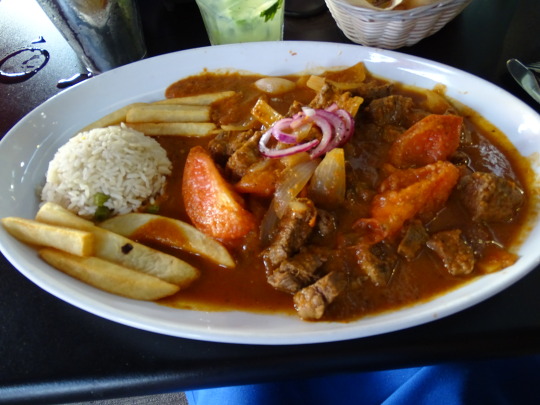










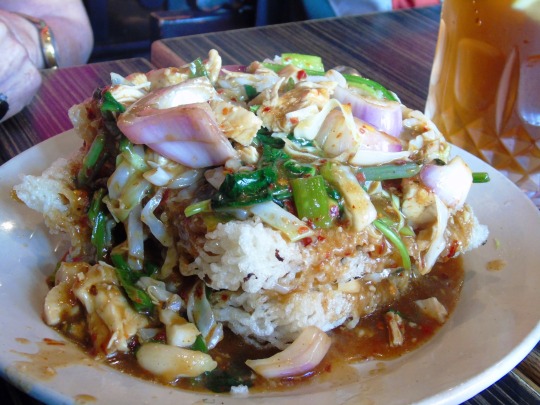

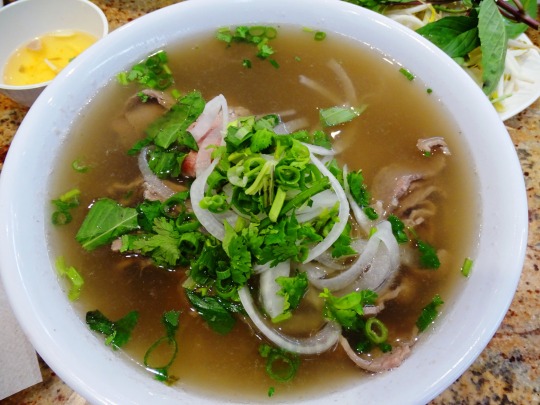





National Onion Day
Today, farmers in the United States are collecting millions of onions. They will be heading for store shelves to provide families with the fresh, nutritional, tasty power to improve meals and boost the body’s immunity. Onions have numerous advantages, such as enhancing meals with a variety of flavors. According to recent research, consuming onions also helps the body fight colorectal cancer and breast cancer, as well as heart disease and diabetes.
National Onion Day commemorates the incorporation of the National Onion Association in 1913. The organization was created to protect the interests of America’s onion growers, and onions remain their business to this day. Today, the group represents over 500 onion producers, shippers, packers, and suppliers across the country.
History of National Onion Day
In June 2022, the National Onion Association established National Onion Day to commemorate the organization’s 53rd anniversary. They officially incorporated on June 27, 1913, in Ohio, and represent almost 500 onion farmers, shippers, packers, and allied members across the U.S.
Onions are one of the world’s oldest cultivated vegetables, having originated in Central Asia and spread around the world. Some researchers believe the onion has been cultivated for at least 5,000 years. Onions were possibly eaten for thousands of years and cultivated all over the world at the same time, since they grew wild in different locations.
We rely on the onion to improve the flavor of our savory meals, whether we use a sweet, white, red, or ever-popular yellow onion. They complement meats and salads, making the versatile onion a culinary powerhouse. It’s the needed seasoning alongside our salt and pepper, whether added to eggs or pickled. While the onion is low in calories, it is also high in vitamin C and antioxidants, and can increase your dietary fiber and vitamin B6 intake. Unlike many other low-calorie ingredients, onions provide a high nutritional content without compromising flavor. And it makes no difference what you do to it; pickled or raw, caramelized, sauteed, or pureed — the onion adds a lot of flavor to a dish. With so many types to choose from, onions present numerous opportunities to reap the benefits.
National Onion Day timeline
3500 B.C. The Onion is First Traced in Egypt
The history of the onion can be traced back to this period, with a Sumerian document describing someone being in awe of the city governor’s onion garden.
1500 B.C. Ancient Egypt Worships Onions
To those who bury onions alongside their pharaohs, onions are a sign of eternity.
1913 National Onion Association Is Founded
On June 2, the National Onion Association is formally incorporated in Ohio.
2019 National Onion Day is First Celebrated
The National Onion Association establishes National Onion Day on June 27, to honor onion producers.
National Onion Day FAQs
Is an onion a vegetable or a fruit?
The vegetables are classified based on the edible part of the plant: leaves (like lettuce), roots (like carrot), bulbs (such as onions), and many others. Alternatively, fruits such as tomatoes and seeds such as peas are commonly referred to as vegetables.
Which country is the largest onion exporter?
According to FY18 data, China appears to be the top onion producer, but the Netherlands is the largest onion exporter.
Do onions aid in the treatment of infections?
Onions were worshiped for their medicinal powers by various civilizations. They have anti-inflammatory properties, relieve joint pain, treat ear infections, work as an antibiotic, and are an excellent expectorant for loosening up thick phlegm.
National Onion Day Activities
Add fresh onion to your favorite recipe
Learn how to grow onions in your backyard
Share the celebration on social media
For a flavor boost, be sure to add some onion in there. No matter how you slice it, onion pulls together some of the greatest flavors! Tell us how you like to cook your onions!
Gardening is fun! Furthermore, if you can cultivate some veggies like onions in your backyard, you can reduce the cost of your monthly groceries by harvesting them yourself.
Be sure to spread the word about National Onion Day by using the hashtag #NationalOnionDay on social media. Also, don’t forget to brag about your onion recipe or how you harvested your own onions.
5 Interesting Facts About Onion
They’ve been around for thousands of years
Sulfuric acid
Onions were worshiped by Ancient Egyptians
The biggest onion ever
The Big Onion
Onions have been present for thousands of years and, around 3,500 B.C, onions were harvested for the first time.
The reason you become teary-eyed when cutting onions is because of the sulfuric acid they contain.
They claimed that the spherical shape and concentric circles represented eternity — onions were used to cover the tombs of their monarchs and were important in ritual burials.
According to ‘The Guinness Book of World Records’, the biggest onion ever was cultivated by Peter Glazebrook, a British farmer, who grew a massive onion in 2011 that weighed just under 18 pounds.
Before it was known as the Big Apple, New York was known as the Big Onion, because it was a place where you could peel layer after layer without touching the center, kind of like an onion.
Why We Love National Onion Day
It encourages cultivation
It promotes culinary creativity
It boosts the immune system
Onions are an important, and healthy part of our diet. Why not grow and cultivate your own in your backyard?
Who would have thought onions, known for making us cry, could be so sweet and delectable with some creativity? These days, almost all culinary innovations use onion for a unique flavor.
Onions are rich in prebiotics. This helps to increase friendly bacteria in your guy, which helps to build immunity against viruses.
Source
#Chicken Lickin' Good Burger#Koma Burger#Lomo Saltado#vacation#Jaime-Style with cheese & sauce Burrito#USA#food#Chow Line#Cowboy Burger#Chili Burger#Texas Roadhouse Chili#steak with mushrooms#Onion Rings#Pho Tai#Beef Black Pepper#Crispy Rice Noodle Tower#Pavla Plate#Green Chile Burger#National Onion Day#27 June#travel#original photography#restaurant#Canada#Fire Jumper Burger#Roast beef with remoulade & fried onions Smörrebröd#Greek Pizza
0 notes
Text
What Is Inflammation?
Inflammation, commonly referred to as "swelling," is the body's defensive response to stimuli, typically characterized by redness, swelling, heat, pain, and functional impairment. Inflammation can be acute or chronic. Acute inflammation is usually beneficial. When you sprain your ankle or catch a cold, the body sends out a large number of white blood cells to help heal the injury or capture harmful bacteria. During this process, you might experience redness, warmth, tenderness, or swelling.
Chronic inflammation, on the other hand, occurs when the body continues to send out signals and produce white blood cells to fight off infection or injury even when no danger is present. These cells may start attacking healthy cells and tissues, leading to chronic inflammation. Chronic inflammation increases the risk of conditions like cancer, heart disease, rheumatoid arthritis, type 2 diabetes, and degenerative brain diseases such as Alzheimer's disease.
Causes of Inflammation:
Environmental Factors:
Air pollution
Industrial hazardous waste
Chemicals
Lifestyle Factors:
Lack of sleep
Irregular routines
Lack of exercise
Psychological stress
Dietary Factors:
Processed sugars
Refined carbohydrates
Trans fatty acids
Gluten
Food additives and preservatives
The occurrence and progression of inflammation are closely related to free radicals. Consuming foods high in free radicals, exposure to polluted air, excessive sugar intake, and lack of exercise can lead to an increase in free radicals in the body, thereby exacerbating inflammation. Conversely, inflammation can also stimulate the production of free radicals, creating a vicious cycle, which is how chronic inflammation develops.
Anti-Inflammatory Agents:
Omega-3 Fatty Acids:Omega-3 fatty acids are polyunsaturated fats. DHA and EPA, two of the three main omega-3s, are primarily found in seafood like sardines, fresh fish, tuna, and krill, as well as in algae. The best source of the third major omega-3, ALA, includes certain nuts, seeds, and plant oils like flaxseed oil, soybean oil, and canola oil.
Turmeric/Curcumin:Curcumin is a natural anti-inflammatory agent with strong antioxidant properties. Research shows that it offers various health benefits and may help manage a range of oxidative and inflammatory conditions, including metabolic syndrome and osteoarthritis.
Ginger:Ginger naturally contains antioxidants and may have antibacterial and anti-inflammatory properties that support the immune system. Studies suggest that the bioactive compounds in ginger may help alleviate issues caused by inflammation, such as the severity of ulcerative colitis, Crohn's disease, rheumatoid arthritis, and chronic pain.
Piperine:Piperine, a component found in black pepper, may help enhance the absorption of other important nutrients. From iron to beta-carotene to curcumin, in Ayurvedic medicine, the combination of long pepper, black pepper, and ginger, known as Trikatu, is believed to work synergistically to reduce inflammation.
Vitamin D:Vitamin D is well-known for its role in strengthening bones, but a study published in the International Journal of Epidemiology found a direct link between low levels of vitamin D and high levels of inflammation. When researchers examined the health data of nearly 300,000 people, they found that low levels of vitamin D may help identify individuals at higher risk of chronic diseases with an inflammatory component. The findings also suggest that increasing vitamin D intake in those who are deficient may help reduce chronic inflammation.
Quercetin:This plant pigment, found in onions, is a flavonoid compound that acts as an antioxidant, helping to protect cells from damage. In addition to its antioxidant potential, some research suggests that quercetin may also act as a cellular brake, preventing the proliferation of inflammatory cells and enzymes.
Synbiotics:The presence of certain bacteria in the gut may lead to several inflammation-related diseases, including type 2 diabetes, inflammatory bowel disease (IBD), and rheumatoid arthritis. Synbiotics are foods or dietary supplements that combine probiotics (promoting healthy bacteria) with prebiotic fibers that help these bacteria thrive.
Apigenin:Apigenin is a type of flavonoid, a class of plant chemicals found in plant tissues that help plants during pathogen attacks and sunlight exposure while attracting pollinators and regulating plant metabolism. It is present in a variety of fruits, vegetables, and herbs. When taken as a supplement, it exhibits anti-inflammatory effects and antioxidant properties.
0 notes
Text
How Do You Eat White Bitter Gourd
How Do You Eat White Bitter Gourd: A Simple Guide
Introduction
White bitter gourd, also known as white bitter melon, is a unique indian vegetable that may not be as popular as its green counterpart, but it holds its own in terms of health benefits and versatility in cooking. While the bitter taste might be off-putting to some, there are various methods to reduce this bitterness, making white bitter gourd more enjoyable to eat. This guide will take you through the steps on how do you eat white bitter gourd effectively, ensuring you can appreciate its taste and reap its health benefits in 2024.
Key Takeaway:
White bitter gourd is a nutritious vegetable that can be enjoyed in various ways if prepared correctly. By using simple techniques to reduce bitterness and experimenting with different recipes, you can make white bitter gourd a delicious and healthy addition to your diet.

How Do You Eat White Bitter Gourd: A Simple Guide
What Is White Bitter Gourd?
White bitter gourd is a pale variety of the more commonly known green bitter gourd. It has a similar appearance but is milder in taste. The white variety is often preferred by those who find the green variety too bitter.
It is rich in vitamins C, A, and B, as well as minerals like iron, magnesium, and potassium. White bitter gourd is also known for its medicinal properties, particularly in traditional Asian medicine, where it is used to treat various ailments.
Health Benefits of White Bitter Gourd
Nutritional Value
White bitter gourd is packed with nutrients that can contribute to overall health. Some of the key nutrients include:
Vitamin C: Boosts immunity and improves skin health.
Vitamin A: Supports eye health and skin.
Folate: Important for cell production and overall development.
Iron: Essential for blood production and body energy levels.
Fibre: Aids in digestion and helps prevent constipation.
Medicinal Properties
Blood Sugar Regulation: White bitter gourd contains compounds that can help lower blood sugar levels, making it beneficial for people with diabetes.
Digestive Health: The fibre content aids in digestion and promotes a healthy gut.
Anti-Inflammatory: It has anti-inflammatory properties that can help reduce inflammation in the body.
How to Prepare White Bitter Gourd
Before you can enjoy white bitter gourd, it's essential to know how to prepare it properly. Here’s a step-by-step guide:
Step 1: Selecting the Right Gourd
Choose a fresh white bitter gourd that is firm and free from blemishes or soft spots. Smaller gourds tend to be low bitter than larger ones.
Step 2: Cleaning and Peeling
Wash the gourd thoroughly under running water. You can peel the outer skin if desired, but the skin is edible and contains additional nutrients.
Step 3: Removing the Seeds
Cut the gourd lengthwise and use a spoon to scrape out the seeds and the white pith. The seeds and pith are the most bitter parts of the gourd.
Step 4: Salting to Reduce Bitterness
One common method to reduce bitterness is to sprinkle salt over the sliced gourd and let it sit for 15-30 minutes. Rinse the gourd under cold water to remove the excess salt before cooking.
How to Cook White Bitter Gourd
Once prepared, there are several ways to cook white bitter gourd. Here are a few popular methods:
Stir-Frying
Stir-frying is one of the easiest and quickest ways to cook white bitter gourd. Simply heat some oil in a pan, add the sliced gourd, and stir-fry until tender. You can add garlic, onions, and other vegetables to enhance the flavour.
Making White Bitter Gourd Curry
White bitter gourd curry is a delicious way to enjoy this vegetable. Cook the gourd with spices like turmeric, cumin, and coriander, along with tomatoes and onions, to create a rich and flavourful dish.
Adding to Soups and Stews
White bitter gourd can be added to soups and stews, where the bitterness is often mellowed out by the broth and other ingredients. It pairs well with chicken or beef in hearty, warming dishes.
White Bitter Gourd Recipes
To make the most of white bitter gourd, here are a couple of simple recipes you can try:
White Bitter Gourd Stir-Fry
Ingredients:
1 white bitter gourd
1 tablespoon oil
2 cloves garlic, minced
1 onion, sliced
Salt and pepper to taste
Instructions:
Prepare the gourd by cleaning, peeling, and removing the seeds.
Slice the gourd into thin pieces.
Heat the oil in a pan over medium heat.
Add small garlic and onion, and sauté until soft.
Add the gourd slices and stir-fry for 5-7 minutes until tender.
Season with add salt and pepper powder, and serve hot.
Ingredients:
1 white bitter gourd
1 tablespoon oil
1 onion, chopped
2 tomatoes, chopped
1 teaspoon turmeric powder
1 teaspoon cumin seeds
1 teaspoon coriander powder
Salt to taste
Instructions:
Prepare the gourd by cleaning, peeling, and removing the seeds.
Cut the gourd into small pieces.
Heat the oil in the pan and add cumin seeds in the pan.
Add the chopped onion and sauté until golden brown colour.
Add the tomatoes and cook until soft.
Add the gourd pieces and spices.
Cook for 15-20 minutes until the gourd is tender and the curry is thick.
Serve with rice or bread.
Tips for Reducing Bitterness
For those who are sensitive to the bitterness of white bitter gourd, here are some tips to help reduce the bitter taste:
Salt and Rinse: As mentioned earlier, salting and rinsing the gourd slices can help draw out some of the bitterness.
Blanching: Blanch the gourd slices in boiling water for 2-3 minutes before cooking to reduce bitterness.
Pairing with Strong Flavours: Use ingredients like garlic, onions, tomatoes, and strong spices to balance out the bitterness.
Soaking in Tamarind Juice: Soaking the gourd slices in tamarind juice for 15-20 minutes before cooking can also help reduce bitterness.
FAQ on How to Eat White Bitter Gourd
1. Is White Bitter Gourd Less Bitter than Green Bitter Gourd?
Yes, white bitter gourd is generally less bitter than its green counterpart. This makes it a preferred choice for those who want to enjoy the health benefits of bitter gourd without an overpowering bitter taste.
2. Can White Bitter Gourd Be Eaten Raw?
While white bitter gourd can be eaten raw, it is not recommended due to its bitterness. Cooking helps to mellow out the flavour and makes it more palatable.
3. How Do You Eat White Bitter Gourd in a Salad?
To eat white bitter gourd in a salad, you should first salt and rinse the slices to reduce bitterness. Then, combine it with other salad ingredients like tomatoes, cucumbers, and onions, and dress with lemon juice or a vinaigrette.
4. Are There Any Side Effects of Eating White Bitter Gourd?
In moderation, white bitter gourd is safe to eat and offers many health benefits. However, consuming it in large amounts may cause stomach upset or lower blood sugar too much, especially for those on diabetes medication.
List: Quick Tips for Eating White Bitter Gourd
Select smaller, fresher gourds to minimise bitterness.
Use salt to draw out bitterness before cooking.
Pair with strong spices and flavours to balance the taste.
Experiment with different cooking methods like stir-frying, curries, and soups.
Start with small amounts if you're new to eating white bitter gourd.
Conclusion
Learning how do you eat white bitter gourd is all about understanding how to prepare and cook it in a way that reduces its natural bitterness while still preserving its nutritional benefits
Orginaly published on White Bitter Info Health
0 notes
Text
Its Kitchen Witchin Wednesday, yall!
The Mushroom of Immortality (AKA Reishi mushroom) has been used for medicinal purposes in China for over 2,000 years.

While it was believed in ancient China to have anti-aging properties, today’s clinical studies have seemed to confirm this belief even further.
The mushroom of immortality was thought to be a mushroom of miraculous properties:
1) To make the dead to rise
2) Bringer of good health and fortune
3) Bringing longevity and life with the immortals
Research has shown that there are three specific compounds found in the Reishi mushroom responsible for its powerful anti-aging benefits:
1) Polysaccharides: Anticancer benefits, stabilize blood vessel formation, immune system boosting.
2) Triterpenes: Liver protection, blood pressure lowering, Cholesterol lowering, preventing heart attack and stroke by stopping platelet clumping, prevents allergic reactions and anticancer benefits.
3) Ganoderma Lucidum Peptide: Extremely potent antioxidant whose benefits are still being studied.
From Curative Mushrooms
Do you supplement with Reishi mushroom?
Sélah
Here's a mushroom broth recipe from Nourished Kitchen
Medicinal Mushroom Broth Recipe

A wide variety of medicinal mushrooms gives this mushroom broth a deeply rich, savory flavor while roasted garlic and onions give it a little touch of sweetness and sage a bright, vibrant flavor. Medicinal mushrooms combine with sage and astragalus of a gentle, nourishing broth.
Prep Time
5 mins
Cook Time
6 hrs 45 mins
Total Time
6 hrs 50 mins
Ingredients
2 pounds chicken bones
1 medium yellow onion (halved)
3 bulbs garlic (halved)
3 medium celery ribs (chopped int 2-inch pieces)
1 tablespoon extra virgin olive oil
8 slices dried reishi mushroom10 dried shiitake mushrooms
¼ cup dried chaga mushrooms
3 slices astragalus root
3 tablespoons dulse flakes
1 cup white wine
4 quarts water
10 medium sage leaves
Equipment
Rimmed Sheet Pan
Parchment Paper
Stock Pot
Instructions
Roasting for flavor.
Heat the oven to 300 F, and line a rimmed baking sheet with parchment paper.
Arrange the chicken bones, onion, garlic, celery, medicinal mushrooms, and astragalus on the baking sheet. Sprinkle them with dulse flakes, and then drizzle the olive oil over them. Slow-roast the ingredients together until fragrant, about 45 minutes.
Simmering the broth.
Transfer the contents of the baking sheet to a stock pot or Dutch oven, and then pour in the wine and water. Bring to a boil over medium-high heat, and then immediately turn down the temperature to medium low and simmer, uncovered, at least 6 and up to 8 hours. Stir in the sage leaves about 20 minutes before turning off the heat.
Turn off the heat, strain the broth and discard the solids. Serve immediately, or store in the fridge up to 5 days and in the freezer up to 3 months. Adjust seasoning with fine sea salt before serving.
#kitchen witch#kitchen witchin' Wednesday#Sélah#reishi mushroom#mushroom broth#recipe#Nourished Kitchen#Curative Mushrooms#mushrooms
8 notes
·
View notes
Photo

Get to Know Your Immune System with Toronto Nutritionist Tonya Papanikolov B.Sc., CNP
In an effort to do our homework and to help us to gain a more holistic perspective of how we can support our immune system, we chatted with our friend Tonya Papanikolov of Rainbo Mushrooms and The Well Woman, a certified Holistic Nutritionist who helped us to gain a fuller understanding of our immune system, ways to support it, and the role mushrooms and other ingredients may play. We here at Greenhouse may be fans of chic white coats, but that certainly doesn’t make us your doctor, so please don’t read this as prescriptive. It’s meant to inform and inspire you to learn more about supporting your immune system. We always encourage you to check with your doctor or health care practitioner before incorporating new suggestions into your health routine.

GH: First things first, how do you like to think about the immune system?
TP: The human immune system is composed of an army of different cells and organs that work together to respond appropriately to pathogens like bacteria, viruses, and injury. Our immune system can be generally divided into innate and adaptive immunity systems. The innate immunity system is the system that responds quickly and non-specifically to general threats. It is primed and ready to fight invaders at all times, whereas the adaptive immune response is slower and needs to be activated. However once activated, the adaptive immunity system uses immunological memory to learn about the threat and enhance an even stronger attack against the specific pathogens accordingly.
GH: What sorts of things in our day-to-day lives have an impact on our immune system?
TP: Stress, diets high in sugar, sleep (rest is best!), water intake, seasons, and gut health.
GH: How does stress impact the immune system?
TP: When we're stressed out, the immune system's ability to fight off antigens is reduced. That is why we are more susceptible to infections. The stress hormone corticosteroid can suppress the effectiveness of the immune system (e.g. lowers the number of lymphocytes).
GH: Are there any “warning signs” to look for that signal that your immune system is under pressure or not at its strongest?
TP: The classic warning sign is that “I’m coming down with something” feeling. But even when you start to feel this way, it’s reversible with some focused TLC, rest and supplements, in my experience anyway! As soon as the feeling comes on, this is my go-to recipe that I make. I drink it all day long, rest and it works every time because the next day I wake up healthy!
GH Note: Try our potent Ginger Booster in this!
GH: Let’s talk mushrooms. Can you give us some background on the use of medicinal mushrooms?
TP: Medicinal mushrooms are specific groups of fungi that have truly incredible and magical healing properties! They have been revered and used for millennia in Asia. Medicinal mushrooms each have their own distinct health benefits, however one thing they all have in common is their ability to modulate the human immune system. They’ve been shown to enhance both innate and adaptive immunity systems, thereby sharpening the surveillance done by immune cells as they roam throughout our body constantly in search of any unwanted cells.
GH: What are some of the specific immunity system benefits medicinal mushrooms provide?
TP: Of the many medicinally-relevant compounds, beta-glucans are the main players that impact the immunity system. Beta-glucans are carbohydrates found in the cell walls of fungi. They are acid resistant, allowing them to pass through the stomach following consumption, and reach the small intestine where they activate receptors located on intestinal immune cells. This activation leads to a wide array of immune responses targeting the white blood cells of both the innate and adaptive immune system.
Medicinal mushrooms are unique in their ability to bi-directionally modulate the immune system. On one hand they enhance the surveillance of immune cells to keep pathogens and cancer at bay, while on the other hand they decrease inflammation so as to not chronically injure the body.
GH: We’re huge fans of both the Rainbo 11:11 and Chaga tinctures. Can you tell us a bit more about why these are the best options for those looking to boost their immune system?
TP: Chaga is our potent antioxidant and longevity mushroom. It contains one of the highest antioxidant content of any food, and serves to enhance the immune system in response to infection and by suppressing inflammation. 11:11 is our potent, super-mushroom immunity system-supporting tincture. Packed with beta-glucans (mentioned above), 11:11’s immuno-modulating effects provide whole system support by helping to build resilience against chronic disease.
GH: What are some other ingredients to focus on for immunity system support?
TP: Garlic, ginger, lemons, honey, lots of fresh veggies and fruits, probiotic, prebiotics (mushrooms, onions, asparagus, leeks, bananas, chicory), and drinking filtered or spring water.
GH: Any final tips for how to keep your immune system supported?
TP: Vitamin D supplementation or exposing the skin to sunshine, stay hydrated, reduce and minimize sugar from the diet, manage stress (meditation! yoga! sex! talking with friends and family!), and keeping a light heart and a positive outlook.
- Tonya Papanikolov, B.Sc., CNP
Tonya Papanikolov is a Toronto Holistic Nutritionist and Founder. You can check her out online at www.thewellwoman.co, connect with on social at @tonyapapanikolove / @rainbomushrooms, and explore Rainbo online or in our Plant Pantry.
Photo shot by Nathan Legieghn
8 notes
·
View notes
Text
Is There A Drug Type Trait?
Puree any of subsequent in a blender: 6 or 7 tomatoes, the onions, garlic, 2-6 tablespoons lemon juice, sea salt, soaked sun dried tomatoes, spices and herbs which you like. Fill the blender to the top-about 7-8 cups. Mix the blended mixture in the flax seed mixture. (Do not blend; you to help leave the flax seeds whole.) Add caraway seeds or fennel seeds or dried onion bits if you rave about.
The medicinal properties of Calendula tend to be very complex and well investigating. I just want to pass around a few of Grandma excellent recipes. The following are an alternative to commercial antiseptics and products. I always have a little jar of Calendula oil at household in my first aid items. I have found that applying a little Calendula Oil on scratches, cold sores, light cuts, Leva CBD Gummies Cost CBD Gummies Review bruises and burns been employed very well for me, my dog and kids.

We obtain that a large percentage of weight gain diets to choose from fail for a couple of reasons. These kind of opposite to each other. Many, have no idea just exactly how much food be eating the kind of food make sure you are eating encourage muscle development and growth. The other is that many body weight tips aren't too interested in preserving making you fat while as in order to build lean muscle.
Prior to planting, place the seeds for a glass half-filled with bottled water Cannabis Study because plain faucet water may contain chemical substances that aren't great for sprouts. Soon after putting, placed both of them on the dark bedroom closet. After 3 days or more, when nulls crack and the white root tip emerges of about half an inch, it's available to be planted.
As it stands now, if a single does anything, District Attorney Bonnie Dumanis will continue on into another year as D.A., unchallenged for another term. Are cheaper . rarely been seen a new position such as hers wasn't coveted by many, minimal of enough to offer some sort of challenge from eager opponents.
Iv. Need to consume a top notch amount of unsaturated essential fats regularly too. Extra virgin cold pressed olive oil, fish oil, flax oil Leva CBD Gummies Reviews Oil Benefits, beans and nuts are great sources of good fat.
Ensure which maintain the pods moist and never let them to dry themsleves. If plants produce a good root ball, transplant them straight into bigger pots and permit them to remain on 18 hours light. It is very important water them completely however make going to not over-water them. Allowed the plant to remain for a day or two right to be able to water them again.
Cannabis vodka is in order to find get and its only sold by a few stores inside of world. You to confident that tend to be buying authentic Cannabis vodka and not some homemade bootleg interprrrtation. Many people enjoy brewing incredibly homemade vodka with stems and seeds but decide be an era consuming system. You can acquire the real thing online on at absinthe liquor shops.
The season premiere sees right where last season ended. As Nancy reveals her pregnancy to crime lord Esteban, she knows that despite it being her lifesaver, is actually also a prisoner. Esteban makes it clear that her function for the other nine months will be an oven, not a girlfriend and not just a wife.
1 note
·
View note